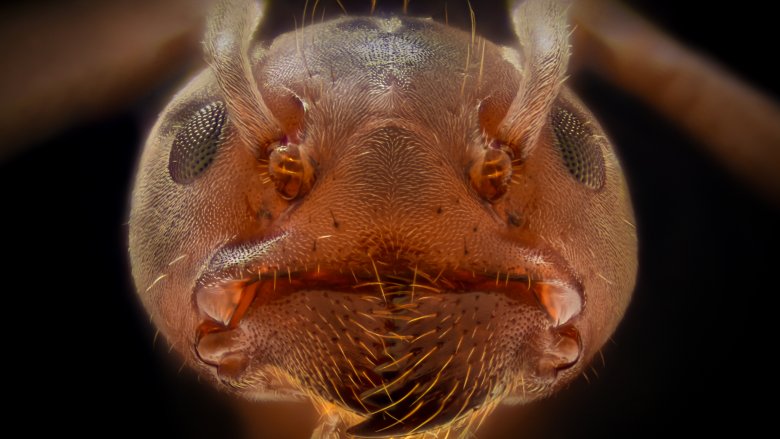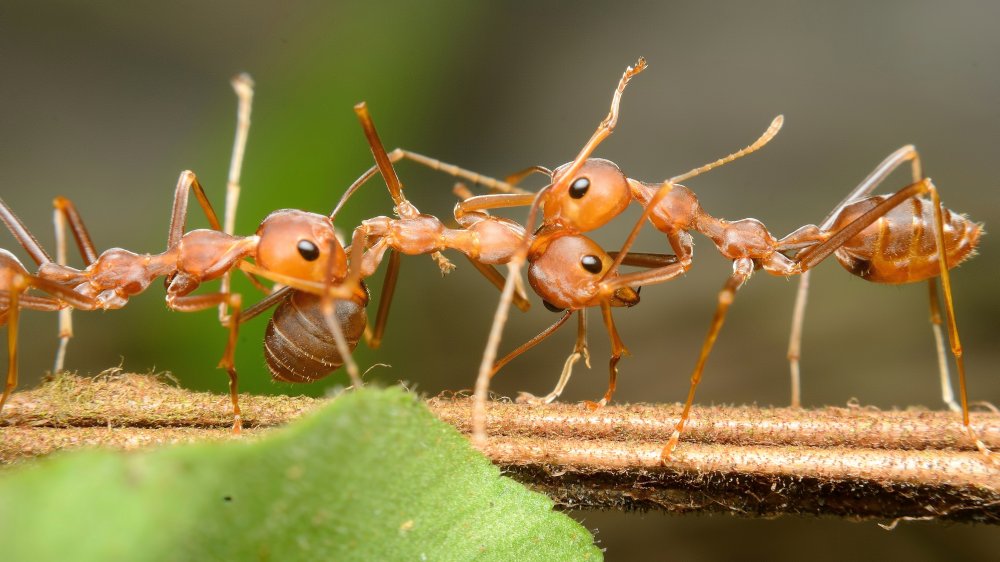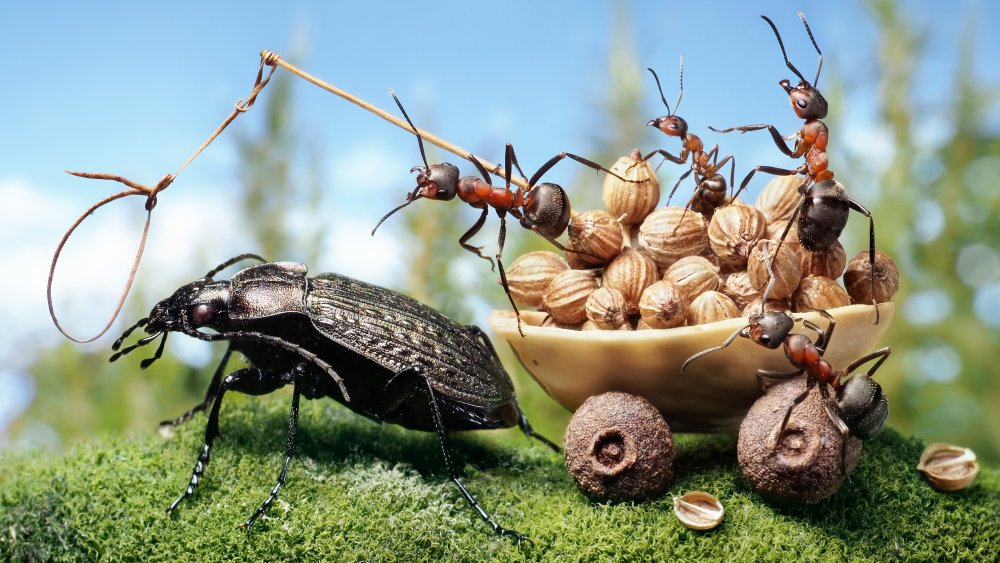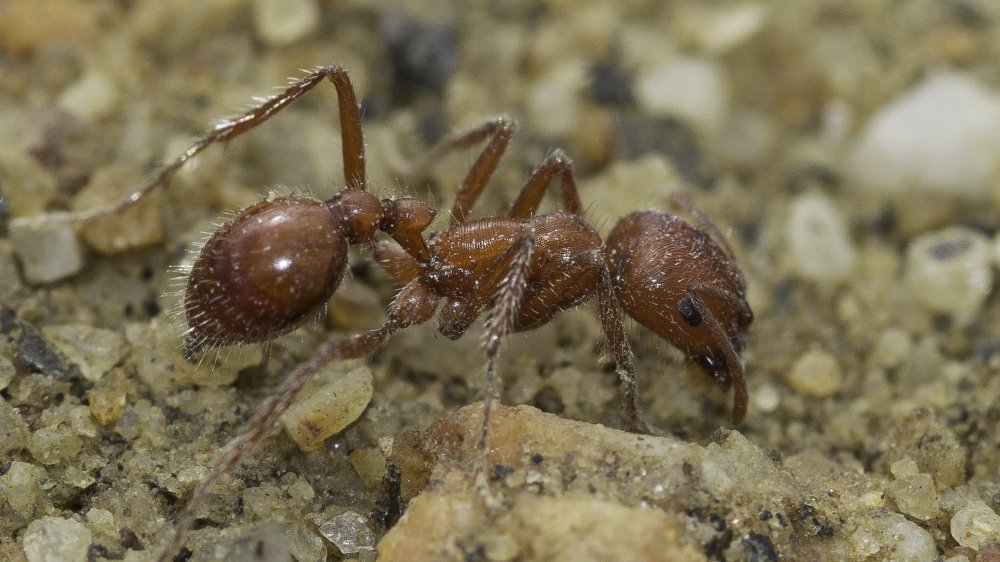The Insect With The Most Toxic Venom In The World
Insects have developed some crazy defenses, since they're generally always going to be food for something. Some bite, some sting, and others like the bombardier beetle just smell like absolute garbage. But which one delivers the most venom?
First off, Encyclopedia Britannica notes that there's a big difference between poisonous and venomous. The easiest way to remember it is that an animal is poisonous if it's toxic when you bite it, and it's venomous if it's toxic when it bites you. So to answer this question, we must seek out the insect which delivers the most venom through a bite or sting, rather than when it is consumed.
Also, we have to clarify the standard which we'll judge it by, which in this case is the LD50 value, the standard for median lethal dosages. This is an objective standard, separate from the amount of pain or discomfort caused, just a pound for pound gauge of toxicity. And the winner is...
Ant venom than makes you say "Uncle"
The harvester ant! According to University of Florida's Book of Insect Records, these ants, specifically the Maricopa harvester ant species, have the most toxic venom based on mice LD50 values. The LD50 for harvester ant venom in rodents is 0.12 mg/kg, compared to an LD50 of 2.8 mg/kg for a honeybee sting. Anne Marie Helmenstine, Ph.D, puts that in perspective, saying it would take about three Maricopa stings to kill a one pound rat. Considering these ants essentially bite down and pivot, stinging continuously, this could happen quite rapidly. Obviously, humans are a different species and weigh far more. If the ants were stinging a human-sized rat, say one that weighed 150 pounds, you'd be looking at roughly 450 stings to reach a lethal level. According to UF, one sting would have us actual humans in severe pain for up to four hours, thanks to the alkaloid poisons contained within the ants' venom.
How do we know this? Well, people were curious enough to try it out and record the data. UF cites a firsthand account that makes harvester bites sound like the opposite of a picnic:
"Several ants stung me on the wrist, and after a few minutes an intense fiery pain began in this area which was about two inches in diameter. It turned deep red in color and immediately a watery, sticky secretion came out of the skin. This area became hot and feverish and the excruciating pain lasted all day and up into the night."
When the harvester becomes the reaper
To make matters worse for anything hoping to survive a run in with harvester ants, the alkaloid poison releases an "alarm pheromone," basically acting as a Bat-Signal for any fellow ants nearby. So one ant could quickly become hundreds. If you're incapacitated amongst enraged ants, you could very quickly be looking at a life or death situation.
Of course, harvester ants share similar toxic qualities to honeybees, meaning they may also trigger a potentially fatal allergic reaction with a single bite. But before you go telling all your aunts and uncles about how dangerous this critter is, note that most harvester ant species are not considered aggressive. The University of Florida says some species almost have to be forced to sting someone, and that fire ants are generally more likely to get a bee in their bonnet than harvesters. Both honeybees and fire ants cause far more deaths per year, while the UF report noted only one death from harvester ants — an Oklahoma infant in 1990.
Harvester ants are least in the east
So, really, unless you've got little kids or pets around or just really care about how your lawn looks, there's not a lot to worry about with harvester ants. They're easily avoidable so long as you can walk, and won't bother you if you don't bother them. Better yet, for East Coasters at least, of the 22 harvester ant species, there's only one — the Florida harvester ant — that lives east of the Mississippi River. All others hang loose on the West coast, including the most venomous Maricopa — which is most commonly found in Arizona. It's also been spotted in California, Colorado, New Mexico, Nevada, Texas and Utah, and in some parts of Mexico.
So while the Maricopa harvester ant is objectively the most toxic venomous insect in the world, it's definitely not the most dangerous to humans. That honor is held by those bloody mosquitoes, which BBC reports is responsible for about 725,000 deaths a year, due to the diseases spread through bites. Remember this rule and you'll be fine: when it comes to ants, keep your distance and keep your pants on and you'll be fine. But mosquitoes? Swat 'til you drop.



